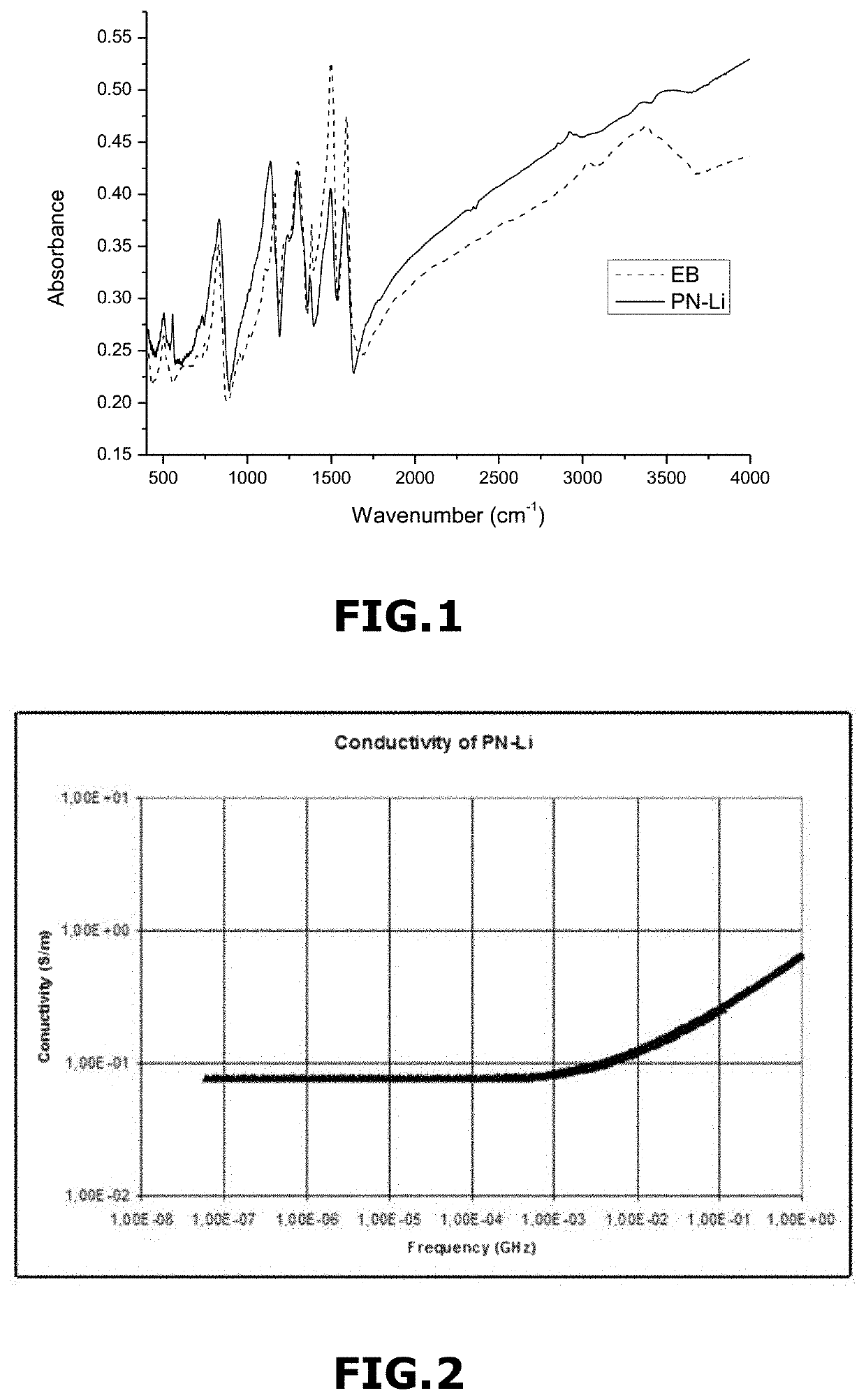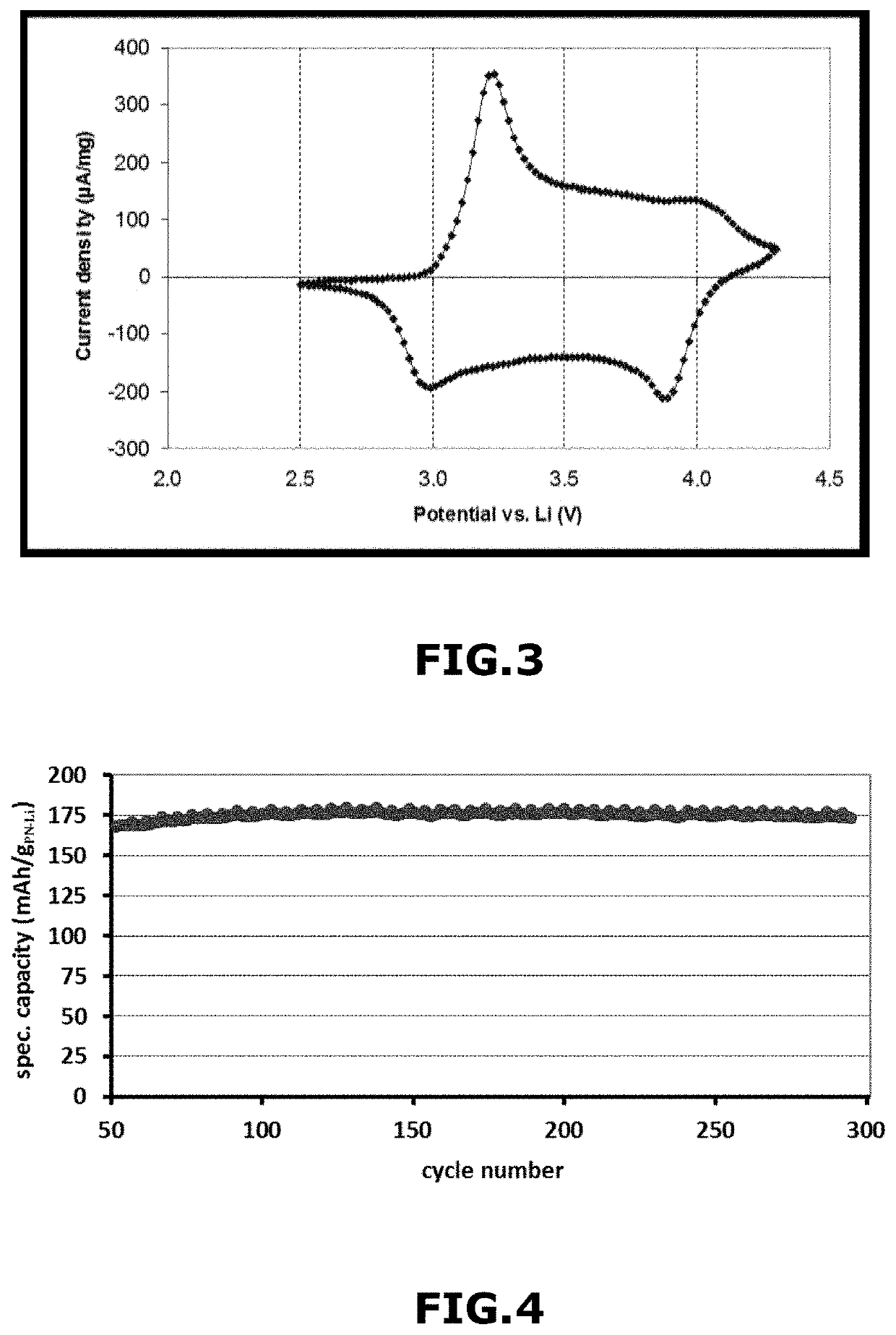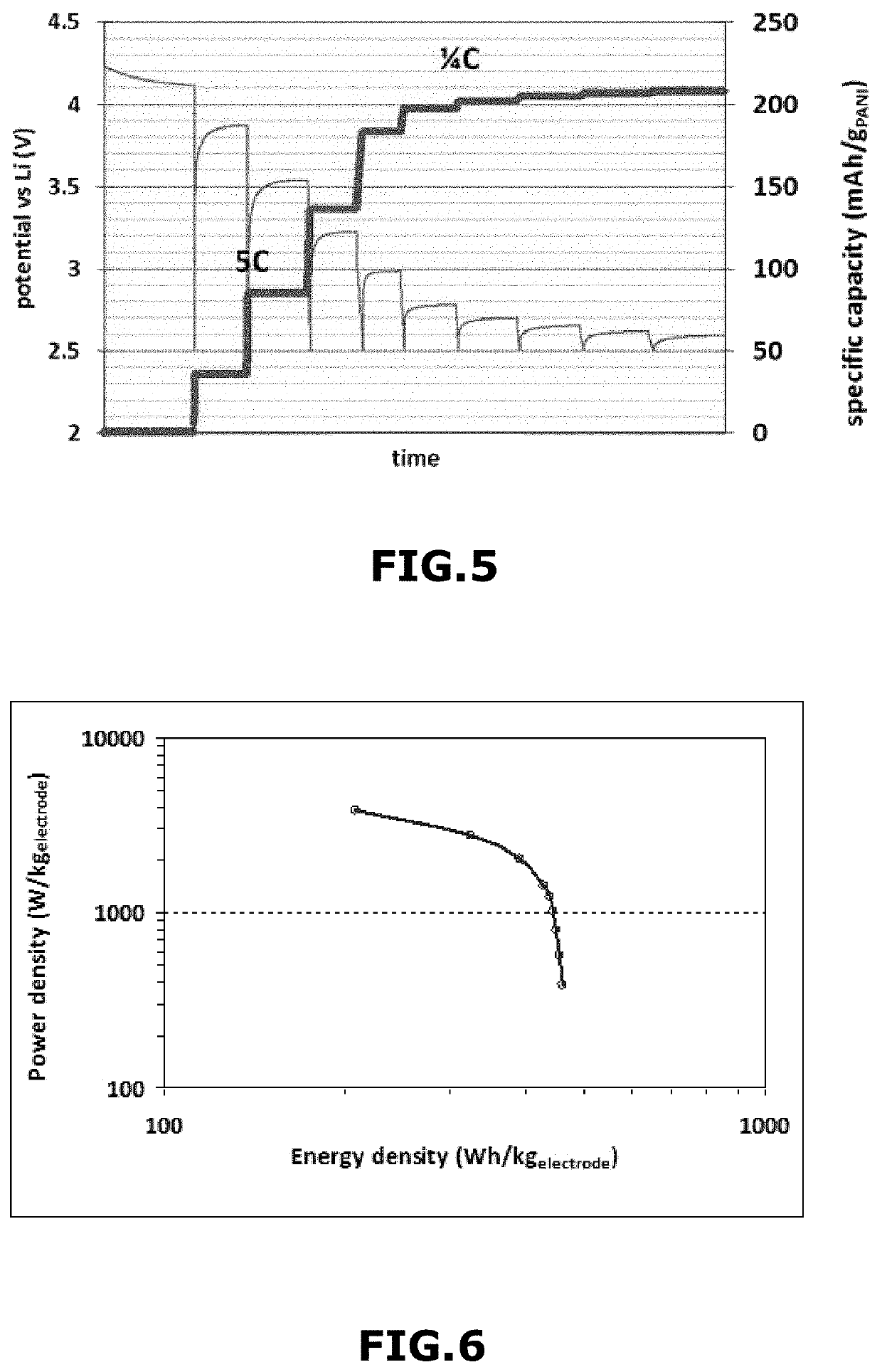Lithium-doped pernigraniline-based materials
a lithium-doped, pernigraniline technology, applied in the direction of double layer capacitors, copper content reduction, electrical equipment, etc., can solve the problems of inability to isolate the completely oxidized form of polyaniline (i.e. pernigraniline), the only successful synthesized form of pernigraniline is now in the process of being successfully synthesized, and the pnb is tiny. , to achieve the effect of high chemical and physical performan
- Summary
- Abstract
- Description
- Claims
- Application Information
AI Technical Summary
Benefits of technology
Problems solved by technology
Method used
Image
Examples
example 1
Preparation of a Lithium-Doped Pernigraniline Material PN-Li According to the Present Invention (i.e. First Object of the Invention) and Prepared According to the Process of the Present Invention (i.e. Second Object of the Invention)
[0283]Inside an argon-filled glove box, 2.1 g of LiPF6 were dissolved in 10 ml of propylene carbonate. To the resulting solution, 160 mg of N,N′-diphenyl-p-phenylenediamine and 100 μl of styrene were added. Then, a piece of 0.5 g of metallic lithium was introduced in the preceding solution. Then, 250 mg of polyaniline powder in the emeraldine base state (EB) was introduced in the preceding solution. The reaction was left with no agitation for 16 hours. The lithium was then removed from the reaction mixture and said reaction mixture was filtrated. A solid was recovered and washed twice with 20 ml of dimethyl carbonate (DMC) to yield 239 mg of the desired material PN-Li (95% yield).
[0284]FIG. 1 represents a Fourier transform infrared spectroscopy (FTIR) of...
example 2
Preparation of a Lithium Battery (Fifth Object of the Invention) Comprising an Electrode Material E1-PN-Li According to the Present Invention (i.e. Third Object of the Invention) Prepared According to the Process of the Present Invention (i.e. Fourth Object of the Invention)
[0287]Inside an argon-filled glove box, 2.1 g of LiPF6 were dissolved in 10 ml of a dimethyl carbonate and ethylene carbonate mixture in a 1:1 volume proportion. To the resulting solution, 160 mg of N,N′-diphenyl-p-phenylenediamine and 100 μl of styrene were added. Then, a piece of 0.5 g of metallic lithium was introduced in the preceding solution. Then, 250 mg of a mixture of EB, polytetrafluoroethylene (PTFE) and vapour grown carbon fibers (VGCF) in 90:5:5 weight proportions was embedded in a stainless steel wire mesh current collector and the resulting embedded stainless steel wire was introduced in the preceding solution. The reaction was left undisturbed for 16 hours. The lithium was then removed from the re...
example 3
Preparation of a Lithium Battery (i.e. Fifth Object of the Invention) Comprising a Composite Electrode Material CE1-PN-Li According to the Present Invention (i.e. Third Object of the Invention) Prepared According to the Process of the Present Invention (i.e. Fourth Object of the Invention)
[0306]5 mg of EB were dispersed in 5 ml of N-methyl-2-pyrrolidinone. Then, 195 mg of LiFePO4 were added to the dispersion and the resulting mixture was stirred for 2 hours. Then, 25 ml of ethanol were added dropwise to the resulting mixture while stirring. The obtained mixture was filtered. A solid was recovered, washed with ethanol, and dried to yield LiFePO4 particles coated with EB (also called LFP / EB material).
[0307]FIG. 8 represents a TEM image of the obtained LFP / EB material. FIG. 8 shows the thin coating of EB covering the LiFePO4 particles.
[0308]Inside an argon-filled glove box, 1.5 g of LiPF6 were dissolved in 10 ml of a 1:1 mixture in volume of dimethyl carbonate and ethylene carbonate. T...
PUM
| Property | Measurement | Unit |
|---|---|---|
| weight % | aaaaa | aaaaa |
| weight ratio | aaaaa | aaaaa |
| weight % | aaaaa | aaaaa |
Abstract
Description
Claims
Application Information
 Login to View More
Login to View More - R&D Engineer
- R&D Manager
- IP Professional
- Industry Leading Data Capabilities
- Powerful AI technology
- Patent DNA Extraction
Browse by: Latest US Patents, China's latest patents, Technical Efficacy Thesaurus, Application Domain, Technology Topic, Popular Technical Reports.
© 2024 PatSnap. All rights reserved.Legal|Privacy policy|Modern Slavery Act Transparency Statement|Sitemap|About US| Contact US: help@patsnap.com










